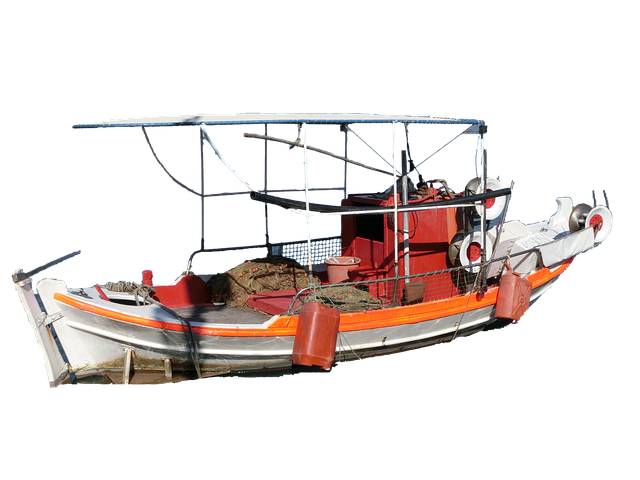Strategic internal linking using optimize anchor text tools boosts SEO by enhancing user experience and search engine rankings. This involves naturally integrating keywords in descriptive link phrases, balancing relevance, diversity, and flow. Tools like Ahrefs, SEMrush, and Moz aid in keyword analysis, ensuring a healthy anchor text profile. Measuring link performance guides optimizations, improving site health and user satisfaction. Regularly reviewing and updating links is crucial for effective internal linking strategies.
In the competitive world of digital content, SEO internal linking is a game-changer for content-heavy sites aiming to boost their online visibility. This comprehensive guide dives into the art and science of strategic internal linking, teaching you how to optimize anchor text effectively using advanced tools. From choosing relevant keywords to measuring success, discover best practices to enhance user experience, improve search rankings, and drive traffic across your site.
- Understanding SEO Internal Linking for Content-Heavy Sites
- Choosing Relevant Anchor Text: A Step-by-Step Guide
- Implementing Strategic Internal Links for Maximum Impact
- Measuring Success: Analyzing Link Performance and User Behavior
- Optimizing Anchor Text with Advanced Tools and Techniques
- Best Practices for Effective Internal Linking Strategies
Understanding SEO Internal Linking for Content-Heavy Sites

In the realm of content-heavy sites, Search Engine Optimization (SEO) internal linking is a game changer. It involves strategically linking relevant pages within your site to enhance user experience and boost search engine rankings. This strategy optimizes anchor text, which refers to the clickable text in hyperlinks, using tools designed for this purpose. By integrating keywords naturally into these anchors, you tell search engines what your content is about, making it easier for them to understand and index your site.
An effective SEO internal linking strategy involves a delicate balance. It requires identifying relevant pages to link between, ensuring anchor text diversity to avoid ‘keyword stuffing’, and fostering a natural flow of links that guides users and search algorithms through your site’s information architecture. This process isn’t just about optimizing for search engines; it also improves site navigation, encourages deeper engagement with content, and reduces bounce rates. Therefore, when implementing internal linking, consider an optimize anchor text tutorial or strategy to achieve optimal results in today’s digital era.
Choosing Relevant Anchor Text: A Step-by-Step Guide

Choosing relevant anchor text is a crucial step in optimizing your site’s internal linking for search engines. It involves selecting descriptive and contextually relevant phrases that accurately represent the target page’s content. An optimize anchor text tool can assist by suggesting popular keywords and analyzing competitor strategies, but it’s essential to go beyond simple keyword matching.
Here’s a step-by-step guide:
1. Understand Your Audience: Consider the terms your target audience uses when searching for information related to your content. This ensures that your anchor text resonates with readers.
2. Keep It Natural: Anchor text should read naturally within the context of your sentence. Avoid overly generic links like “click here” or “read more.”
3. Focus on Keywords: While natural language is key, include a primary keyword from the target page in the anchor text to help search engines understand the link’s relevance.
4. Diversify Your Links: Use a variety of anchor text lengths and structures to prevent patterns that could signal spammy practices to search engines. Include long-tail keywords as well for more specific links.
Implementing Strategic Internal Links for Maximum Impact

Implementing strategic internal links is a powerful technique to maximize the impact of your content on search engine optimization (SEO). By strategically linking relevant pages within your site, you create a seamless user experience while also enhancing the overall authority and visibility of your content. An effective strategy involves carefully selecting anchor text that not only accurately represents the linked page’s content but also incorporates targeted keywords using an optimize anchor text tool. This ensures that both users and search engines understand the context and relevance of each link, boosting the SEO potential of your site.
When executing internal linking optimization, focus on creating a natural flow of links that guide users through your content. Prioritize linking to high-quality, related content to establish authority and improve user engagement. Additionally, ensure your optimize anchor text strategy is consistent across your site, maintaining a healthy balance of keyword usage while preserving the readability of your internal links. This method, combined with regular updates and relevant content, can significantly contribute to better search engine rankings and improved user satisfaction.
Measuring Success: Analyzing Link Performance and User Behavior

Measuring success is a vital step in any SEO strategy, and internal linking is no exception. By analyzing link performance, you can understand which pages are gaining traction and how users are navigating your site. This data is crucial for refining your optimize anchor text strategy and identifying areas for improvement. Using an optimize anchor text tool can help you assess the quality of your backlinks and ensure that your anchor text distribution is balanced and natural.
Examining user behavior provides valuable insights into what content resonates with your audience. Keep track of click-through rates, bounce times, and time spent on page to gauge engagement. These metrics will highlight high-performing pages and help you optimize lower-ranking ones by implementing similar successful tactics. In terms of optimize anchor text optimization, a well-analyzed approach can significantly enhance the overall SEO health of your content-heavy site.
Optimizing Anchor Text with Advanced Tools and Techniques

In the realm of SEO internal linking, optimizing anchor text is a game-changer. Advanced tools like Ahrefs, SEMrush, and Moz offer sophisticated features to analyze existing links and suggest relevant anchor texts for new ones. These platforms provide in-depth insights into keyword density, helping you maintain a natural flow while ensuring each link carries the right weight. By using these optimize anchor text tools, you can avoid generic phrases like “click here” or “this link” that offer little value to search engines or users.
Implementing effective optimize anchor text tips involves strategic usage of keywords and variations. Incorporate target keywords naturally within your anchor text, but steer clear of overstuffing. Diversify your anchor profile by including brand names, specific content references, and even partial match keywords. This not only enhances the overall SEO strategy but also enriches user experience, encouraging engagement and lower bounce rates. Remember, an optimize anchor text tutorial is a powerful asset in optimizing your site for both users and search engines.
Best Practices for Effective Internal Linking Strategies

To create effective internal linking strategies for content-heavy sites, start by optimizing anchor text with tools that analyze your current links and suggest improvements. These tools help ensure that each link’s anchor text is unique, relevant, and includes targeted keywords to improve both user experience and search engine visibility. An optimize anchor text tutorial or tips from SEO experts can guide you in creating natural-sounding, keyword-rich anchor texts that enhance the relevance of your pages without appearing spammy.
When implementing these strategies, focus on contextual linking where relevant content is linked together organically. This means using specific and descriptive anchor text that accurately represents the target page’s content. An optimize anchor text optimization process involves regularly reviewing and updating links to maintain their effectiveness as your site grows and content evolves. Additionally, prioritize internal links within pillar content and resource pages, as these serve as foundational guides for both users and search engines, further enhancing the overall optimization of your site.
